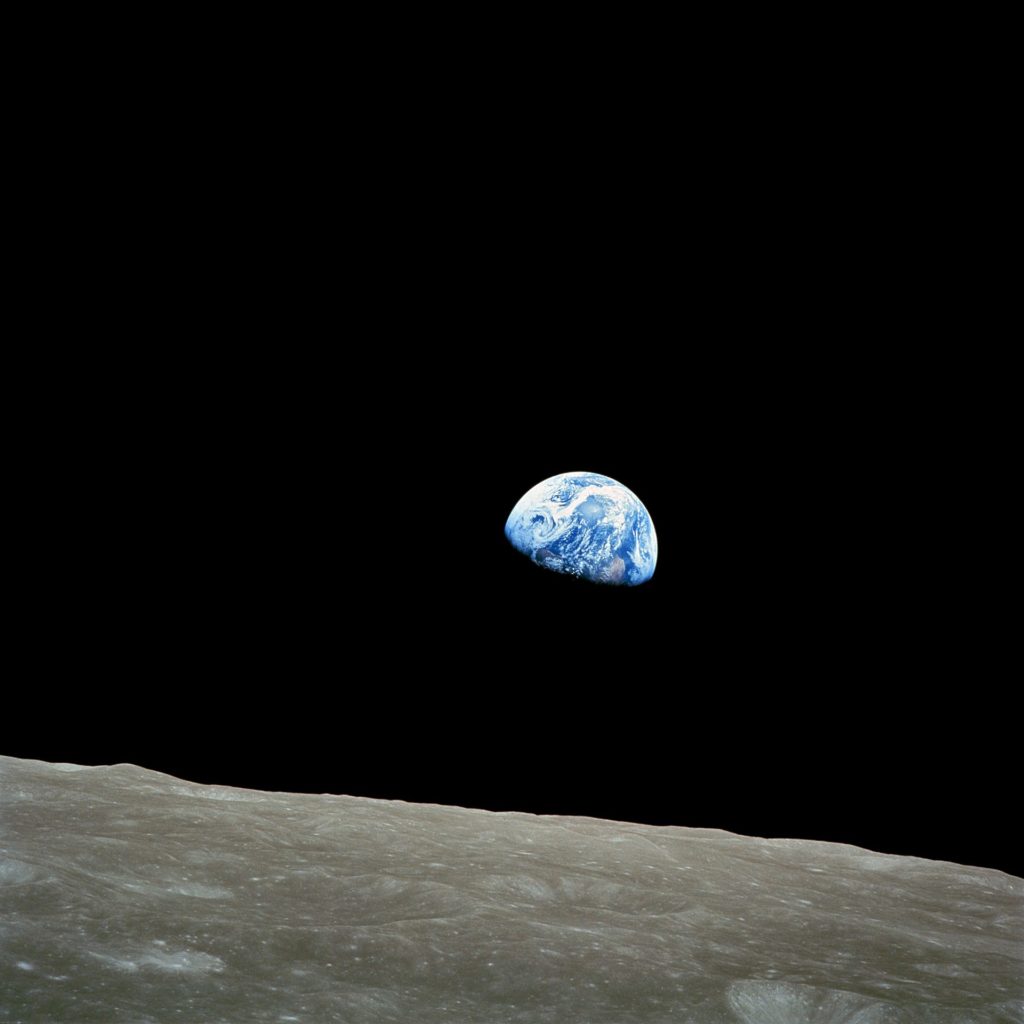Fifty years ago this December, at the end of a ghastly year of assassinations, riots, war, and political unrest, three astronauts became the first humans to leave the gravitational embrace of Earth, orbit another world, and return safely back home. Apollo 8 was a mission of astonishing audacity, put together in great haste to counter a possible Soviet lunar mission which U.S. intelligence sources believed was imminent. And it served as a major step to fulfill President Kennedy’s promise to land a man on the Moon and return him safely to Earth by the end of the 1960s.
The astronauts of Apollo 8, William Anders, Frank Borman, and James Lovell, surmised their chances of success were 50-50, at best. If they perished, it might be a knock-out blow to the prospects of manned spaceflight for a generation, especially after the disaster of Apollo 1 less than two years earlier.
But Apollo 8 did not fail. It was a huge, historic success that led to three more Apollo flights over the next seven months, culminating in the landing of Apollo 11 and the first steps by mankind on another world.
In the splendid video above, the filmmaker Emmanuel Vaughan-Lee speaks with the astronauts of Apollo 8 about what it was like for them to be the first of only twenty-four humans to see, with their own eyes, the Earth from that great distance, the Earth as a delicate blue ball hanging in the cold blackness of space. The video, which lasts some thirty minutes and makes for far more interesting viewing than the standard fare on Netflix or Hulu, uses original video and still images from the mission, and features a recollection of the capture of “Earthrise”, the paradigm-shifting photograph of the Earth rising over the Moon. It’s arguably the most famous astrophoto ever taken.

Vaughan-Lee was also entranced by the vintage look and feel of the film-based images from Apollo 8, which he incorporated into his video:
The tactile quality of the 16mm footage and 70mm photography imparted a quality I felt was lacking from the crisp digital images from satellites and the International Space Station I’d become accustomed to seeing. I could almost feel the human presence behind the lens, a sense of emotion that was imparted to the footage itself. In telling the story, I wanted to create that human connection to the Earth I felt within the footage and the astronauts’ experiences. I wanted to explore how to feel and witness the Earth as our home the way they had. I wanted to share the awe and beauty they had experienced, to remember the power of this image they shared with the world.
Like all astronauts, the men of Apollo 8 were hardened and taciturn pilots and engineers, and they were surely preoccupied with keeping their historic flight on track. Still, they lamented during the flight, after seeing the Earth rising over the Moon, that NASA “should have sent a poet.” A day after William Anders snapped the “Earthrise” photograph, a poet did have a crack at interpreting what the astronauts witnessed. In the front pages of the New York Times, Archibald Macleish published his reflections. He concludes:
To see the earth as it truly is, small and blue and beautiful in that eternal silence where it floats, is to see ourselves as riders on the earth together, brothers on that bright loveliness in the eternal cold — brothers who know now they are truly brothers.
If only.
Share This: